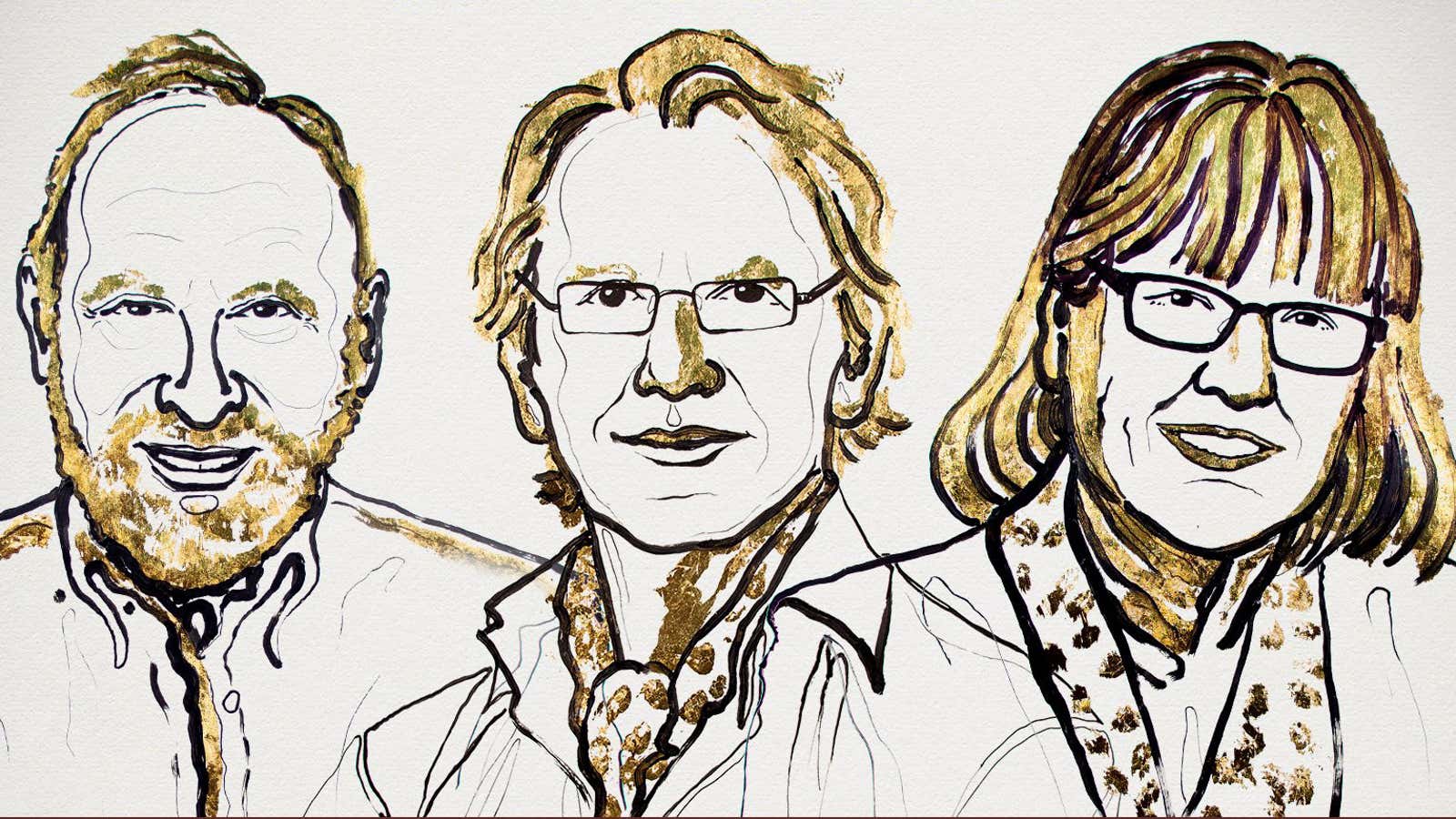You probably don’t think about lasers all that much. But they’ve revolutionized our lives. They are used in everything from reading barcodes to directing intercontinental missiles. So great is their impact that there have already been four Nobel Prizes in physics—in 1964, 1981, 1997, and 2005—awarded for fundamental work done in lasers.
This year’s Nobel Prize in physics recognizes two more significant pieces of work on lasers. Arthur Ashkin, a former employee of Bell Labs in the US, got the prize for developing “optical tweezers and their application to biological systems.” Gérard Mourou of École Polytechnique in France and Donna Strickland of the University of Waterloo in Canada have been awarded “for their method of generating high-intensity, ultra-short optical pulses.” (It’s worth noting that Strickland is the first woman in 55 years and the only the third woman to win a Nobel Prize in physics. Why do so few women win Nobel Prizes?)
Ashkin began playing with lasers soon after they were invented in the 1960s. Put simply, lasers are focused beams of light particles called photons. Ashkin understood that, if he were to put enough of these photons together, it would be possible to create “radiative” pressure on objects. More importantly, Ashkin understood that, although a laser is a focused beam of light, it has more photons in the middle of a beam than at its edges. The difference created a natural gradient, which could be exploited to hold objects in place with nothing but two such lasers. That became what we know today as “optical tweezers.”

Ashkin went on to use optical tweezers to hold bacteria. Then, with even more precise lasers, he began to study the insides of microbes without destroying them. Others followed up on his work by using lasers to tweak the molecular machines inside living cells. In other words, Ashkin had created a real-life version of the tractor beam that Star Trek made famous in the 1960s.
Strickland and Mourou, meanwhile, were inspired by a popular science article to come up with an idea for another use of lasers. Strickland, then at the University of Rochester, had begun a PhD in Mourou’s lab. Together their goal was to create very powerful but short-lived lasers. Until the 1980s, attempts to create such lasers inevitably broke the instruments used for amplification because of the amount of power needed to do the job.
What Strickland and Mourou found was that stretching a laser out reduced its peak power, which could then be greatly amplified using normal instruments. It could then be compressed to create the short-lived, highly powerful lasers they were after. The technique, which was described in Strickland’s first scientific publication, came to be known as chirped pulse amplification (CPA). They probably didn’t know it then, but the tools Strickland and Mourou created have made it possible to study natural phenomena in unprecedented ways.
CPA could be used to create a laser pulse that only lasts one attosecond, one-billionth of a billionth of a second. At those timescales, it became possible to not just study chemical reactions, but also study what happens inside individual atoms.

The lasers can also be used to make highly precise cuts into materials like semiconductor chips; to store data in solid-state hard drives; and to manufacture custom-made medical stents to widen and reinforce blood vessels.
“There are innumerable areas of use, which have not yet been fully explored,” writes the Nobel Prize committee. “Every step forward allows researchers to gain insights into new worlds, changing both basic research and practical applications.”
Beyond lasers, this year’s Nobel Prize recognizes an under-appreciated part of scientific work: the creation of tools. Ashkin, Mourou, and Strickland didn’t set out to create something for all the applications mentioned above. They set out to create the tools that they knew would have lots of potential for different applications, even if they couldn’t come up with the applications themselves. It’s the kind of fundamental research that requires lots of investment without knowing that there will be a pay-off. Luckily, these scientists put their trust in the process.
You can read all of Quartz’s coverage of the 2018 Nobel Prizes here.
